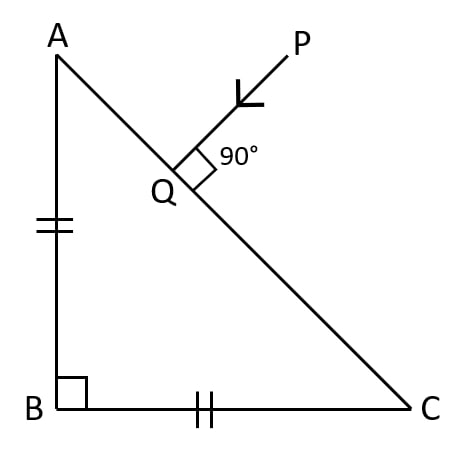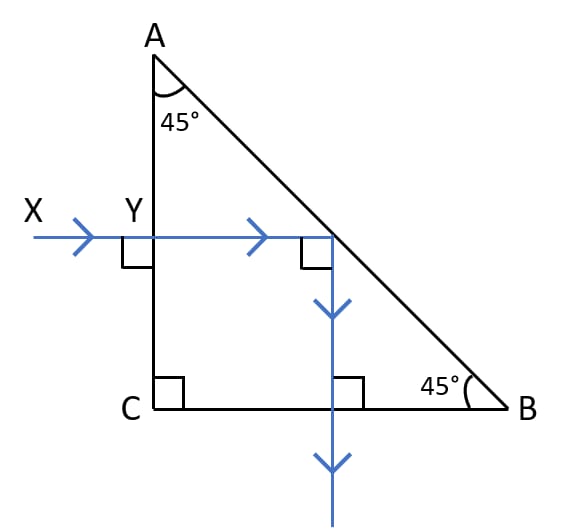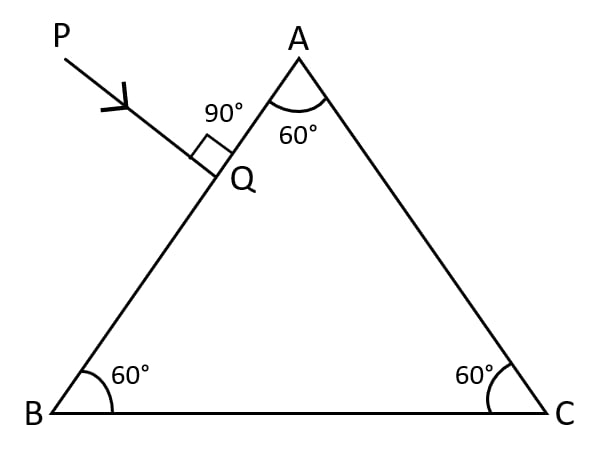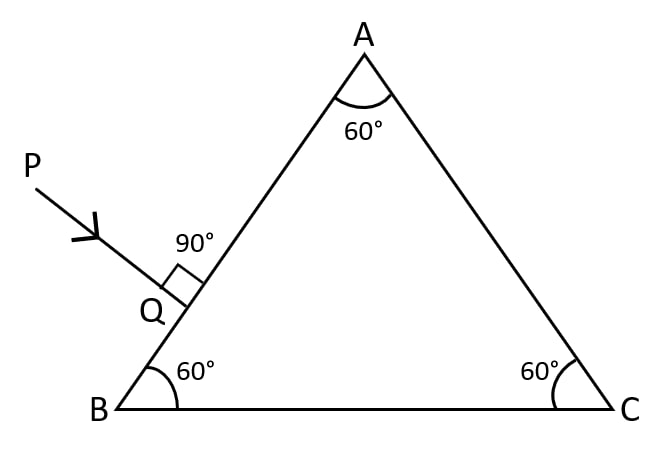Physics
In the figure, a ray of light PQ is incident normally on the hypotenuse of an isosceles right angled prism ABC.

(a) Complete the path of the ray PQ till it emerges from the prism. Mark in the diagram the angle wherever necessary.
(b) What is the angle of deviation of the ray PQ?
(c) Name a device in which this action is used.
Refraction Plane Surfaces
41 Likes
Answer
(a) Below diagram shows the path of the ray PQ till it emerges from the prism with all the angles labelled:

(b) The angle of deviation of the ray PQ is 180°.
(c) This action of the prism is used in Binoculars.
Answered By
26 Likes
Related Questions
A ray of light XY passes through a right-angled isosceles prism as shown in the adjacent diagram.

(a) What is the angle through which the incident ray deviates and emerges out of the prism?
(b) Name the instrument where this action of prism is put into use.
(c) Which prism surface will behave as a mirror?
Draw a diagram of a right angled isosceles prism which is used to make an inverted image erect.
In the figure given below, a ray of light PQ is incident normally on the face AB of an equilateral glass prism. Complete the ray diagram showing its emergence into air after passing through the prism. Take critical angle for glass = 42°.

(a) Write the angles of incidence at the faces AB and AC of the prism.
(b) Name the phenomenon which the ray of light suffers at the face AB, AC and BC of the prism.
Copy the diagram given below and complete the path of the light ray till it emerges out of the prism. The critical angle of glass is 42°. In your diagram mark the angles wherever necessary.
